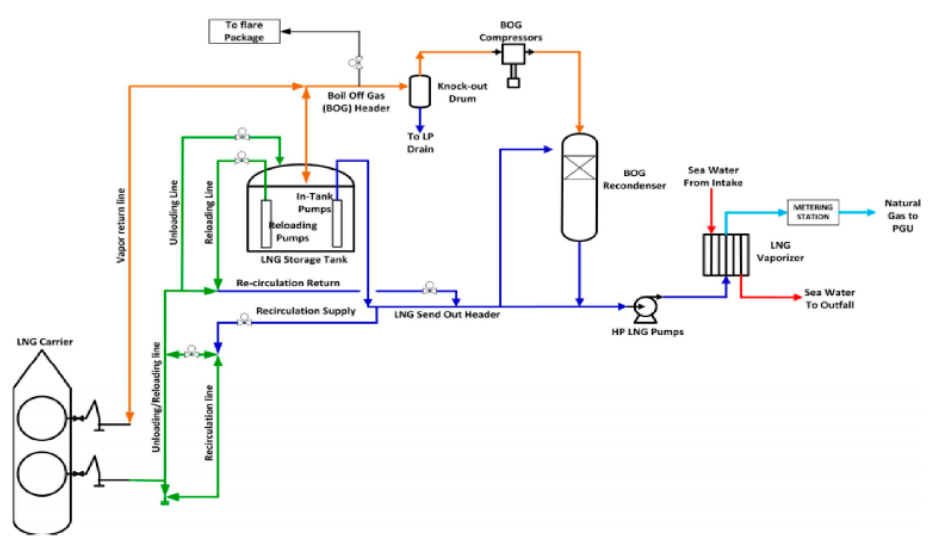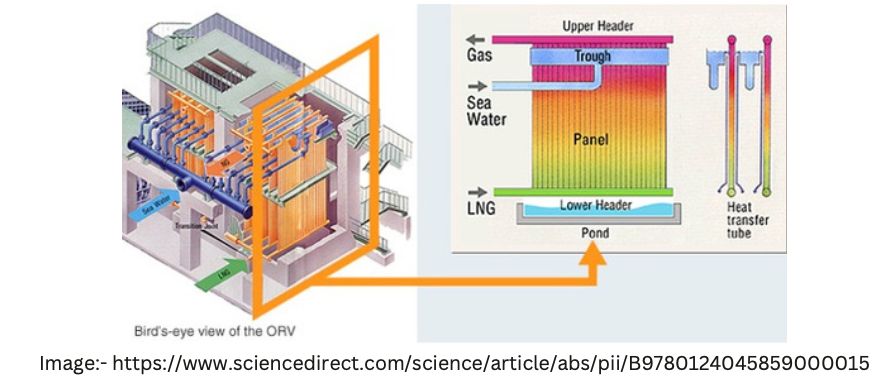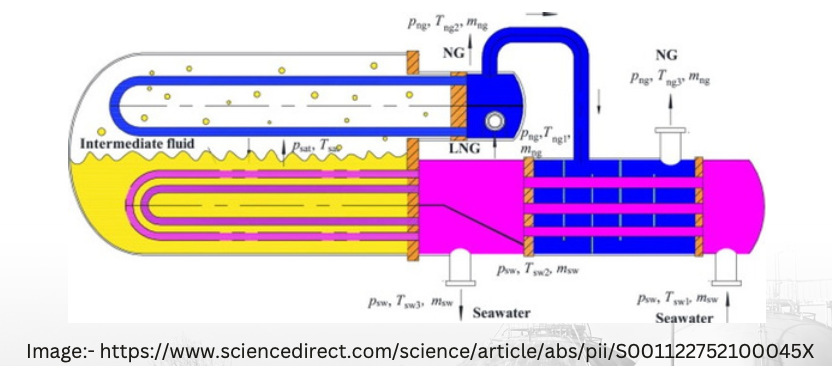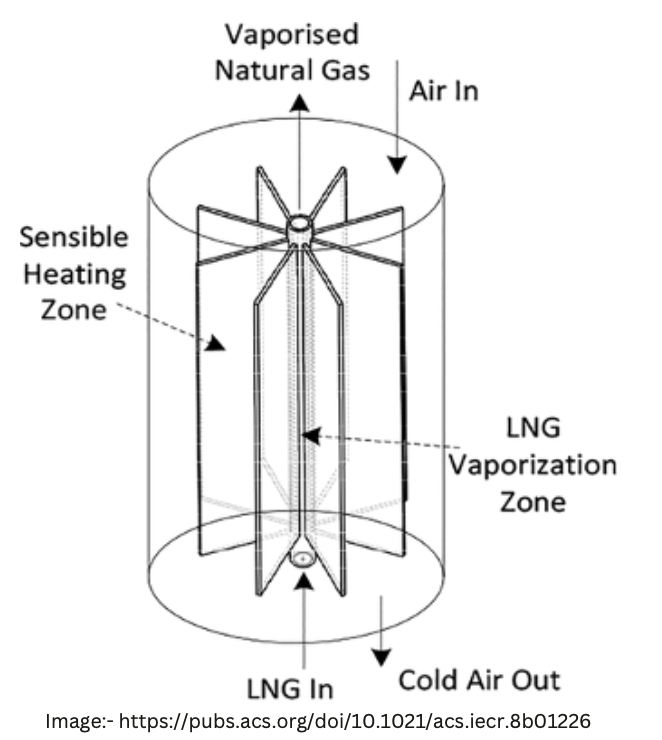LNG Import Terminal Processes
LNG import terminals can play an important role in meeting the energy demands of countries that do not have sufficient domestic natural gas reserves by providing a reliable source of imported natural gas that can be used for power generation, heating, and other applications. However, the construction and operation of LNG import terminals can also involve significant capital investment and environmental and safety considerations, which must be carefully managed to ensure safe and efficient operation.
The main elements of equipment that comprise an LNG import and regasification terminal are:
- Unloading arms,
- Cryogenic pipelines
- Storage tank(s)
- Low-pressure pumps
- Boil-Off Gas (BOG) compressors and re-condensers
- High-pressure (HP) pumps Vaporizers.
Unloading Arms: - To transfer cargo safely from an LNG carrier to the terminal, specialized "hard arms" are employed in the unloading process. These hard arms connect the ship's manifold system to the terminal. Before beginning the LNG unloading operation, the loading arms are chilled to -162°C (-259°F). The unloading arms are designed to withstand the expansion and contraction resulting from temperature changes, but ship movements can risk extending and rupturing the arms. To mitigate this risk, emergency disconnect systems are installed on the arms. Additionally, most hard-arm installations feature a Power Emergency Release Coupler (PERC) to safeguard the ship's manifold connection and the terminal's rigid arms.
Cryogenic pipelines: - Cryogenic pipelines are pipelines that are designed to transport cryogenic fluids, such as liquefied natural gas (LNG), liquid nitrogen, or liquid oxygen, which are substances that have been cooled to shallow temperatures and converted into a liquid state.
The design and construction of cryogenic pipelines require special considerations due to the extreme temperatures and other properties of the transported fluids. These considerations can include:
Insulation: Cryogenic pipelines require effective insulation to maintain the low temperatures of the transported fluids and prevent heat transfer to the surrounding environment. Insulation materials can include perlite, polyurethane foam, or vacuum insulation.
Materials: Cryogenic pipelines must be constructed from materials that can withstand extreme temperatures and other properties of the transported fluids. Common materials used for cryogenic pipelines include stainless steel, aluminum, and special alloys.
Pressure: Cryogenic pipelines must be designed to withstand the high pressures generated by the expansion of the transported fluids, which can occur as the fluids warm up and transition back to a gaseous state.
Safety: The transportation of cryogenic fluids involves unique safety considerations due to the potential risks associated with extreme temperatures and other properties of the fluids. These risks can include fire, explosion, and asphyxiation, among others.
Cryogenic pipelines are an essential component of the infrastructure needed to support the transportation and distribution of cryogenic fluids, such as LNG, for use in various industrial, commercial, and residential applications.
Storage Tanks: - Once LNG is unloaded, it is transported via cryogenic pipelines to insulated storage tanks specifically designed to hold it. These tanks can be found in onshore import terminals, offshore import terminals, and peak- shaving facilities. They are built to withstand cryogenic temperatures, keep the liquid at a low temperature, and minimize the amount of evaporation. The evaporation of a small portion of the LNG is called "boil-off gas." Maintaining a constant pressure in the LNG storage tank by allowing boil-off gas to escape keeps the temperature stable. The released gas can be captured and either re- condensed, compressed, and sent to the pipeline or reinjected into the LNG carrier to maintain positive pressure during unloading. The gas may be sent to the flare in abnormal or accidental situations. The storage facility has a venting feature as the ultimate protection against overpressure caused by a "rollover" condition in the tank. Rollover refers to the rapid release of LNG vapors from the tank due to stratification from two layers of different densities. Operators use densitometers to monitor the development of stratified layers in the LNG tank, enabling them to mix the LNG within the tank or other tanks and prevent rollover. An LNG import terminal typically has two or more storage tanks.
Regasification of LNG
The main types of vaporizers used in the Regasification process are:
- Open Rack Vaporisers
- Submerged Combustion Vaporisers
- Intermediate Fluid Vaporisers
- Ambient Air Vaporisers
Open Rack Vaporisers: - Heat for vaporizing LNG in Open Rack Vaporisers is obtained from seawater. Before entering the ORV, the seawater undergoes filtration to remove small solid particles. The filtered seawater flows over panels of tubes containing LNG and collects in a trough before being discharged back into the sea. As the LNG flows through the tubes, it is heated and vaporized. The tubes are designed to maximise the efficiency of heat exchange.
Submerged Combustion Vaporiser: - Submerged Combustion Vaporizers are used to heat the LNG and convert it back into natural gas. These vaporizers burn a small percentage of the natural gas produced by the terminal and then pass the hot gases into a water bath that contains a tubular heat exchanger. The LNG flows through the heat exchanger, and the froth generated by the combustion gas enhances the efficiency of heat transfer between the water and the LNG. Additionally, the froth prevents ice formation on the tube bundle. Typically, Submerged Combustion Vaporisers burn only 1.2 to 1.5% of the natural gas processed.
Intermediate Fluid Vaporisers: - The Intermediate Fluid Vaporiser (IFV) uses a dual-stage process to heat up the LNG. In the first stage, the LNG is heated by an intermediate fluid, such as propane, and in the second stage, the intermediate fluid is heated by a heat source, typically seawater. The exchangers in the IFV are designed to ensure efficient heat transfer. By using this method, IFVs prevent the formation of ice and reduce the likelihood of fouling. The operational advantages of IFVs justify the additional cost associated with the use of an intermediate fluid.
Ambient Air Vaporisers: - The heat required for this type of vaporiser is obtained from the surrounding air. While this technology has been commonly used for smaller LNG installations that receive LNG via road trucks, it has also been utilized in larger units at LNG import terminals where seawater-based systems are not viable. These units can have either natural convection or fan- assisted airflow.










